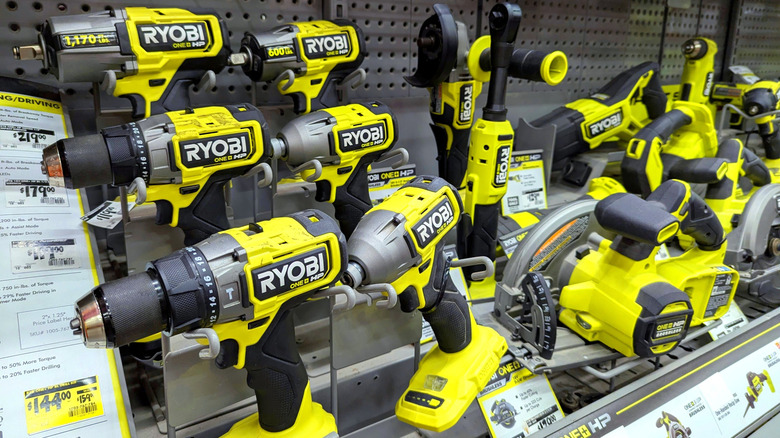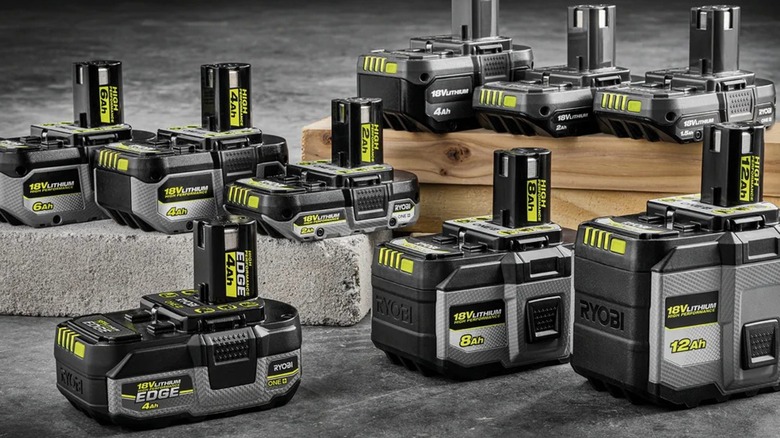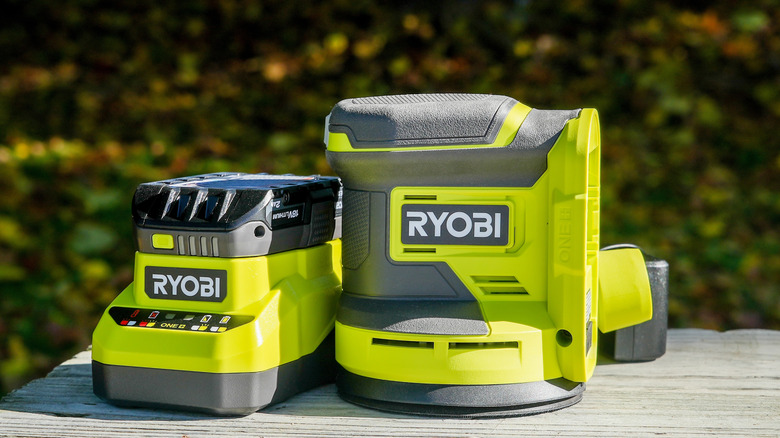How To Choose Between Ryobi's 18V Edge And 18V HP Batteries For Your Tools
Ryobi's 18V ONE+ system is massive. We're talking more than 300 tools and counting; everything from nail guns to pool vacuums. And with a catalog that size, it's no surprise there's more than one kind of battery to power it all. If you want to explore some of the best must-try tools that you can use with your Ryobi batteries, this is a great place to start. And, if you're trying to decide between the 18V HP and the newer 18V Edge battery, know that you're not just choosing between two plastic bricks. You're deciding how much performance your tools can actually squeeze out of them.
Both the HP and Edge tiers are a step above Ryobi's standard ONE+ battery packs, but they're not twins. They're more like siblings: same DNA, different strengths. The slightly older 18V HP line has been the go-to for high-performance Ryobi tools, delivering solid power and decent runtime. However, the Edge battery (released in 2024) is the newest and most advanced member of the family, bringing smoother energy transfer and better heat management to the job site. So, which one should you buy? Let's dig into what they're actually made of.
What makes 18V Edge and 18V HP batteries different
At their core, both HP and Edge batteries are built on Ryobi's IntelliCell tech, which means they monitor and balance power across cells for more consistent performance. That's your baseline. Where things start to diverge is how each one handles heat, energy transfer, and tool communication, especially when powering brushed and brushless motors, which differ significantly in efficiency and durability.
Edge batteries are designed with Ryobi's most demanding tools in mind: the brushless, high-drain HP+ line. They come equipped with upgraded internals, like tabless cells (for smoother energy flow) and Cool-Core Pro heat management, which helps your tool run longer without throwing a temperature tantrum. They're also built to "talk" to your tool, allowing it to draw only the power it needs, exactly when it needs it.
HP batteries, meanwhile, are still very capable. They also feature heat management (just not the Pro version) and perform well in both brushless and brushed tools. The key difference? HP batteries don't have the same top-end efficiency or heat control. But they do come in more sizes, from compact 2Ah packs to beefy 12Ah options, giving you more flexibility for different jobs, especially if you know how to ensure the longevity of your Ryobi tool batteries with a few simple habits.
Pick the right battery for your tools
Still not sure which battery belongs in your tool bag? It mainly depends on what tools you use and how hard you're pushing them. If you rely on HP+ tools, the Edge battery is the better pick, offering longer runtime, reduced overheating, and more consistent power. For those working with standard Ryobi tools or lighter projects, HP batteries usually provide sufficient performance at a lower price point.
The 18V Edge battery is currently only available in a 4Ah size. If you need longer runtime or lighter-weight options, HP gives you more choices to work with. That said, if you're planning to future-proof your setup and are using newer Ryobi gear, the Edge might be worth the splurge, especially given its performance in hands-on comparisons with HP batteries.
At the end of the day, both batteries are compatible with Ryobi's full 18V ONE+ lineup. So, no matter what you pick, your tools will still run. The only difference is how hard they go, and having the right accessories can make all the difference. These power tool accessories that every homeowner should have help you get the most from your gear.


